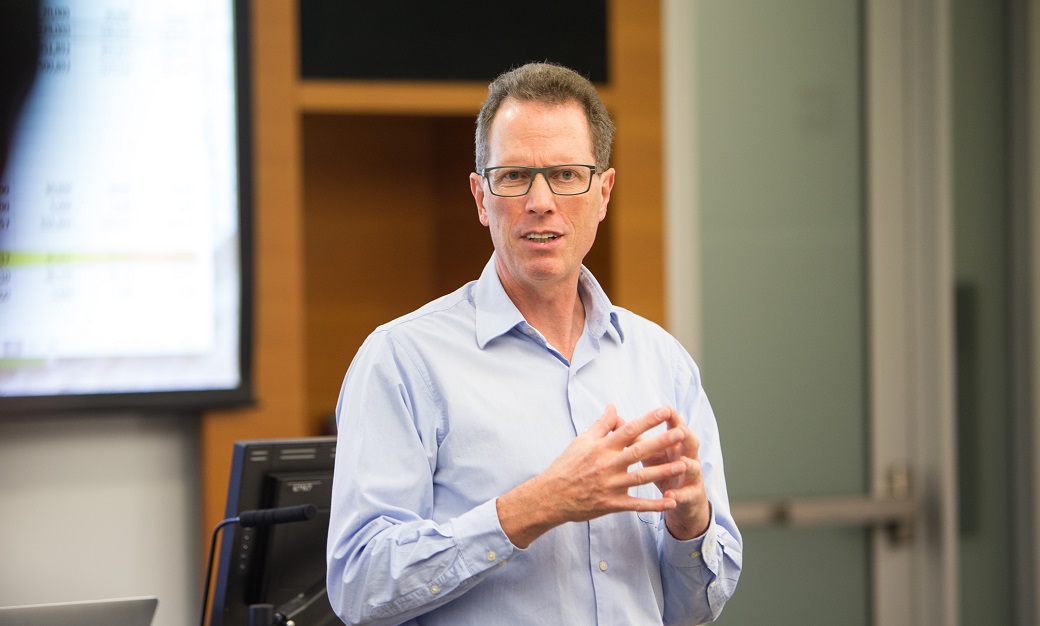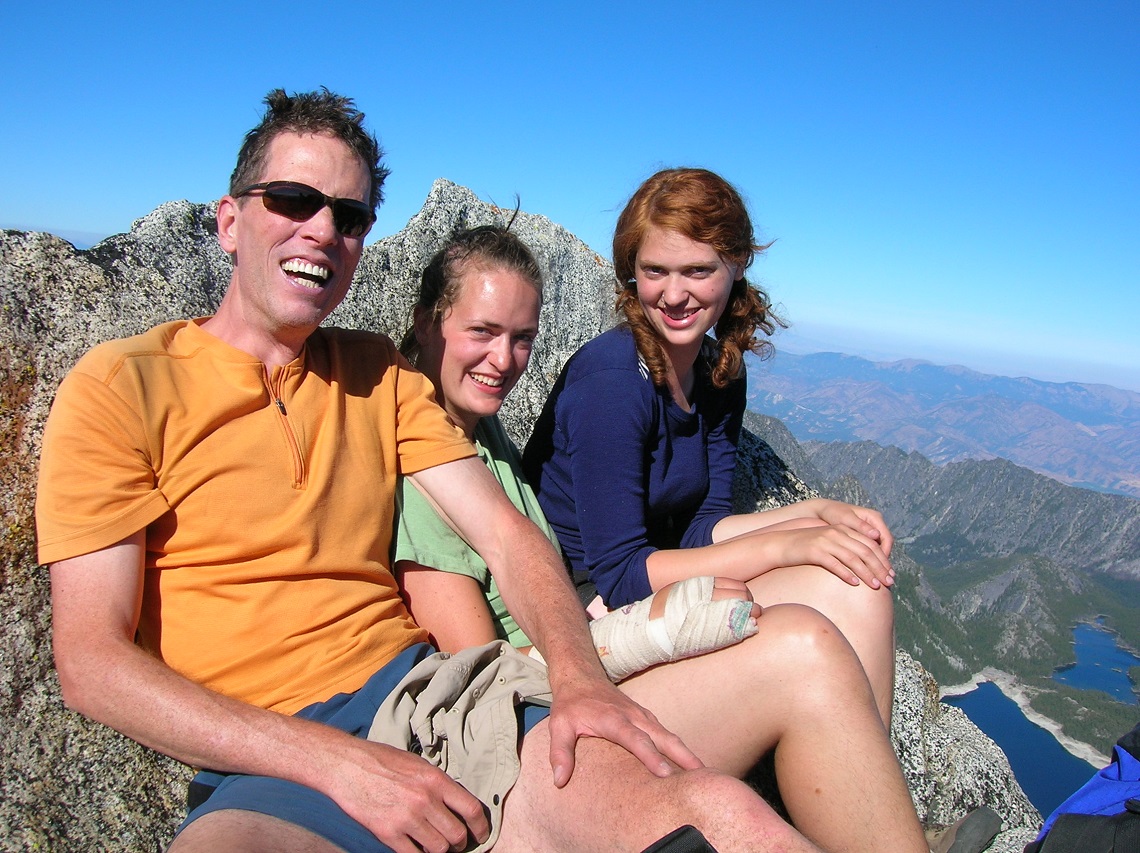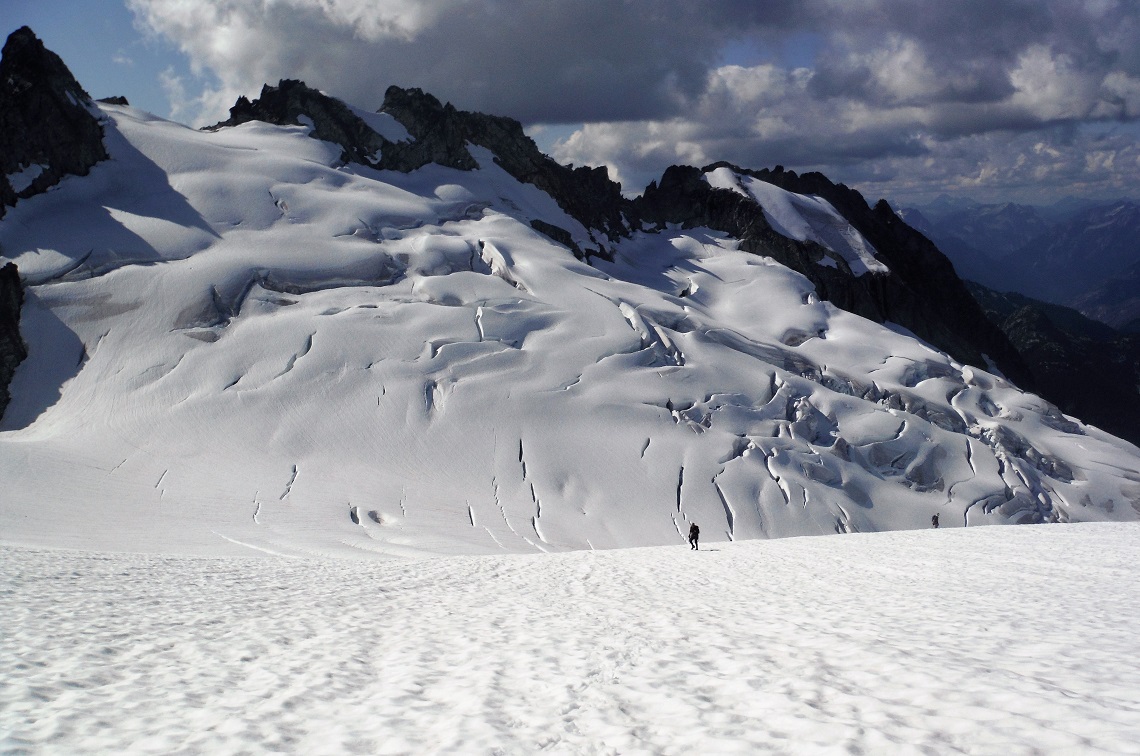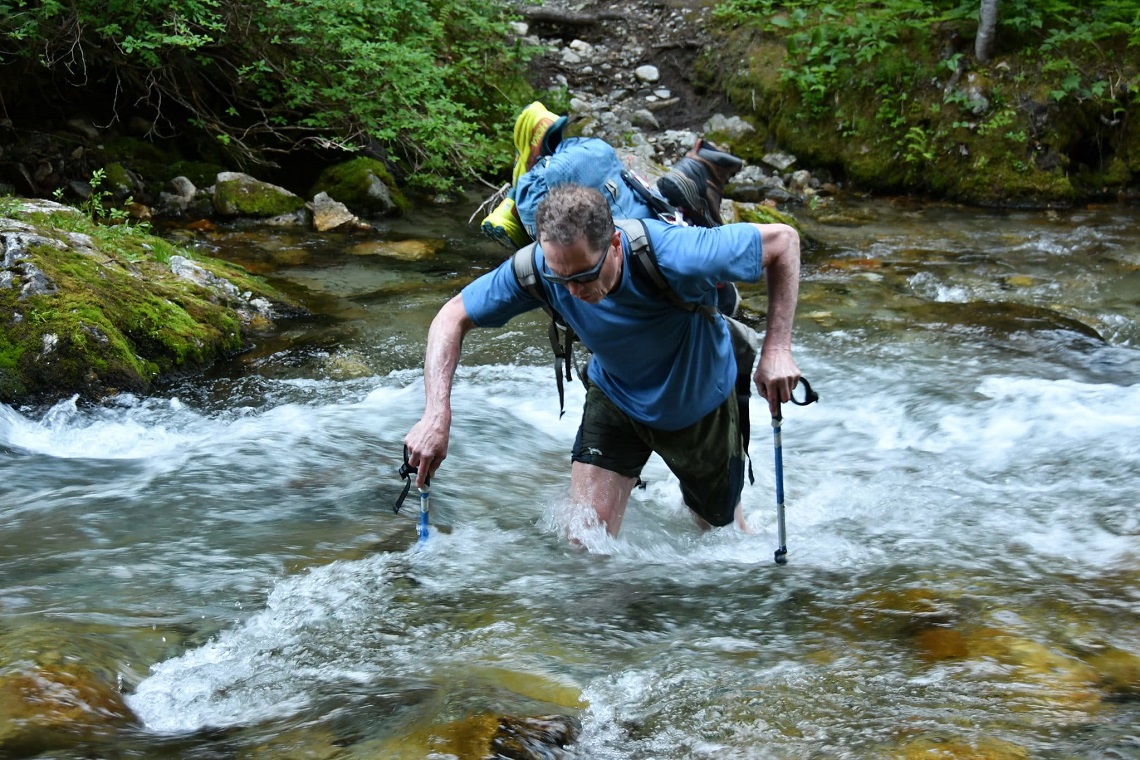Cascade Century
Jonathan Karpoff joins the exclusive list of mountaineers who have summited the “Bulger 100” highest peaks in Washington
Jonathan Karpoff has earned more than his share of prestigious academic honors during a long and distinguished career at the University of Washington Foster School of Business.
The professor of finance and business economics and Washington Mutual Endowed Chair in Innovation has received the Griliches Prize in Empirical Economics, the Outstanding Contributions to Research in Corporate Governance award from the influential Drexel University Center for Corporate Governance, a Best Paper Award at the University of Chicago CRSP Forum and the William F. Sharpe Award for Scholarship in Financial Research. He is a member of the Financial Economists Roundtable and a fellow of the Financial Management Association, where he stands among Nobel Laureates and other giants of finance.

But Karpoff’s latest achievement is one of a wholly different kind.
This fall, he became just the 86th person to complete the “Bulger 100”—summiting each of the 100 highest peaks in Washington state.
This demanding challenge encompasses the biggies (Rainier, Adams, Glacier, Baker, Stuart) to the lesser known (Mox, Maude, Hoodoo, Argonaut, Big Snagtooth, Seven Fingered Jack) to the downright ominous (Forbidden, Formidable, Storm King, Sinister).
The comprehensive list was first and finally codified in 1975, at which time a shaggy group of dyed-in-the-wool mountain climbers began racing to summit the state’s unambiguous top 100 peaks. They called themselves “Bulgers,” a malapropism of the roughneck rogues featured in a verse of unvarnished Australian ribaldry, circa late 19th century, entitled “Bastard of the Bush.” The first of the original Bulgers completed the quest in 1980.
Karpoff joined their illustrious company somewhat later in the game. The avid outdoorsman only became aware of the challenge in 2007, on the occasion of his 50th birthday, by which time he had already climbed 23 of the state’s highest pinnacles. No stranger to a challenge, he set out to knock off the remaining first 50 by the end of the year—“a pretty effective ruse to get outdoors,” he would write.
It took another 15 to complete the second 50. But, climbing alongside a rotating band of partners (and sometimes alone), Karpoff finally did it. His capstone was an epic slog up the 9,087-foot massif of Mount Logan in July.
It completed a “journey of plodding and grunt work, but also connection and exhilarating wilderness, that transforms a person, for the better,” he wrote.
Karpoff’s achievement as Bulger finisher #86 was recently honored at the Mountaineers Club. Asked to speak at the reception, the lifelong educator nearly found himself—uncharacteristically—at a loss for words. “I had no idea what to say,” he recalls, “I mean, there were going to be real climbers in that audience.”
Real enough for us, we asked Karpoff about the adventure of his lifetime.
Foster Business: Which climb was your favorite?
Jon Karpoff: I get asked this question a lot and always respond with a different answer. For pure scrambling pleasure in a remote part of the North Cascades, it is hard to beat Goode Mountain’s NE Buttress, a 3,000-foot straight shot to the top from the Goode Glacier below.

But for meaning, my favorites include the peaks I climbed with my wife, Chrystell (two peaks), and daughters Alex (six peaks) and Tesha (nine peaks). My favorite memories include Alex doing cartwheels on the top of Mount Rainier and Tesha drawing one of her tattoos in the register at the top of Big Craggy.
Which was the most difficult?
The mountain known as “Hard Mox” is widely considered the most challenging of the Bulger peaks. But for me, Jack Mountain was the hardest. In a failed attempt, one of my climbing partners got so frustrated with the steep bushwhacking that he tore off the sole of his boot and tossed it down the mountainside! Even the trip on which I summited turned into a fiasco when we ran into a new hatch of mosquitos while descending from about 5,000 to 2,000 feet. Rappelling off trees down cliff bands, I had to resist the temptation to use my brake hand to swat at the mosquito hordes feasting on any part of me they could reach—nose, cheeks, eyes.
Which was the most epic?
Eric Wehrly and I skied the full length of a cross-country route called the Ptarmigan Traverse and the only mountain I climbed was Dome Peak. Retracing our route after four days out, I was so tired that I could not stay upright on skis and nearly tumbled over a cliff. I put the skis on my back and plunged-step my way out in the dark.

Tied for most epic is a solo trip to climb Luahna. It involves 20 miles of travel through remote country, but I told Chrystell I should be home for dinner that same evening. The relentless bushwhacking, however, took time and energy and I ended up suffering heat exhaustion, vomiting food and water, cramping up, and crawling to the top. I found a sheltered spot and holed up for the night, and bushwhacked back to the car the next day. That same day, I attended my niece’s wedding rehearsal dinner and ate about five meals.
At the risk of asking the most cliched of questions, why do you climb mountains?
I have thought about that question—when you are outdoors you have a lot of time to think—and have a three-part answer:
The first reason is the physical challenge. Comfort is great, but the benefits of physical discomfort are underrated. Pursuing—and sometimes failing at—your personal misogi provides perspective and humility.

The second reason is the mental challenge: managing your fear, hunger and discomfort, navigating with no visibility or sight lines, negotiating with your climbing partner in a sketchy spot, making smart decisions with limited resources, accepting the reality that the mountain does not care about you.
Urban living and work are stressful. Getting papers rejected can be demoralizing. Standing in front of a class or professional audience is intimidating. But whenever such things start to feel overwhelming, I can re-center by remembering the much tougher problems I have faced in the mountains. I guess it is a way to dance with life’s challenges by leaning directly into them.

The third reason I climb is the most important one. It is simply to be there. To be in and surrounded by the natural world. To live and breathe and feel the wind and sun and rain. To smell skunk cabbage in the spring and dying sitka valerian in the fall. To be surrounded by the sound of rushing water and the booms of moving ice. To have dirt on your hands and fir needles in your hair. There is no substitute for simply being there.
You’ve been recognized with some prestigious academic awards. How does this honor stack up?
That is a very flattering question. I think the answer is that neither type of honor matters that much (except perhaps to Chrystell, which is one of the reasons I love her). I would give up any academic honor if it meant having to forgo the mountains. And I would give up the title of Bulger Finisher #86 if it meant having to give up research and teaching.
Like any achievement, the meaning comes from striving toward a positive goal, not achieving the goal itself. And, really, the goals at both work and in the mountains are similar—to strive for excellence with integrity and a big dose of humility. The two are complementary, and I think together help to make me a better teacher and researcher.
This is not the first time that Jon Karpoff has been recognized for his outdoor pursuits. In 2019, the Wall Street Journal featured his prowess at adventure skate skiing in its “What’s Your Workout?” series.
Images for this story courtesy of Karpoff. Read personal accounts of his Bulger 100 adventures and misadventures on the NW Hikers forum.

